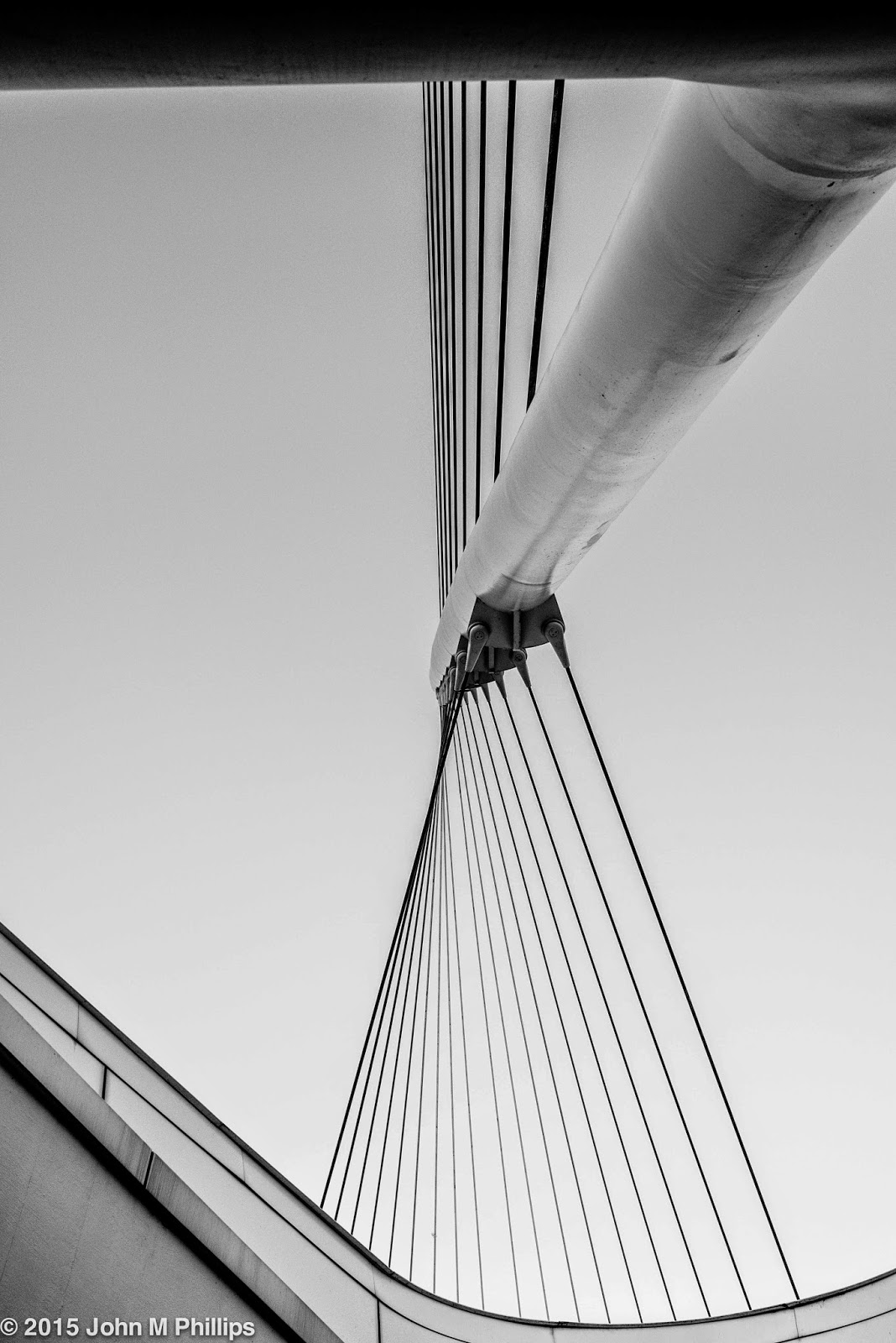This spring I again obtained permission to photograph the interior, this time with my newish camera, my Nikon D750, which allows for wider angled shots and superior resolution. The School Sisters again graciously gave me free rein in the chapel and turned on the lights for me. I was very pleased with the results.
The first photo is a standard symmetrical wide-angle shot from the rear of the nave.
As with nearly all of the photos of this series, this was shot at f/8 and an ISO setting of 100. I used my tripod for nearly all of the photos, so, assuming I was careful, shutter speed was not much of an issue. This was shot at an exposure of 1.0 second. White balance is always an issue with interior venues. I shot this with the white balance on auto, which I realized was not quite right. In post processing I adjusted it to what I recalled as the best representation of the color balance, but I don't think I quite caught it right.
I decided that it might be more dramatic to set the camera closer to the floor and got this shot.
I think the minor difference in height makes a major difference in impact. A major reason, I think, are the pews, particularly those in the rear that serve to create foreground elements to help with the overall composition.
Partly because it is there, I took a ceiling shot.
Again, the ornate pillars in the upper corners help to create foreground interest and context. This was also shot at f/8, this time for a 2.0 second exposure.
One of the key features of the chapel is the apse, and I spent a significant amount of time shooting that area, particularly the ceiling. Here are a couple of shots of the ceiling, the first taken at an angle; the second from directly underneath, looking straight up.
The D-shaped skylight features a dove, symbol of the Holy Spirit, I think. Because these are relatively "tight" shots, they become abstracts. The first was shot at f/8 for 0.5 seconds, the second at f/9 for 0.4 second. And here are wider angled shots, the first again at an angle and the second from directly underneath.
I really like this last image, which was shot at 24 mm, as wide-angled as I can get with my 24-120 mm lens. Again, it was shot at f/8 for 0.6 seconds.
The apse includes a number of mosaic murals, as well as a very elaborate, ornate altar piece. Here is a shot of the altar piece in context followed by a shot of the mosaic mural above the altar piece.
The chapel includes a number of lovely stained glass windows. Below is a shot of one of those.
The light streaming through the window differed significantly from the general light in the chapel. Here is another, much tighter shot of a portion of another window.
I thought the arches in the side aisles were beautiful. Here is a shot of one of those.
This was a 0.4 second exposure at f/8 at an ISO of 400 (for some reason). I also got a nice photo looking up from one of those aisles.
The pillars and arch in the foreground that repeat the archwork on the other side of chapel help to make this shot, I think. This was shot at f/8 for 1.6 seconds at an ISO of 100.
As with the prior visit, I was given access to the balcony at the rear of the nave. Following are three of the wide-angle photos that I got. The first two are symmetrical shots from the center of the balcony. Despite having wider angle capabilities, I still had to choose between including a portion of the pews on the lower level or including the beautiful circular stained glass skylight above the sanctuary. The third shot is from the corner of the balcony. All three were shot at f/8 for 1.3 seconds.
As I was finishing my shoot I took a photo of the archwork at the rear of the nave.
I was drawn to how the light streaming through the stained glass was reflecting off the polished floor tiles.
I was delighted with my experience at St. Joseph Chapel. The space is, in short, stunningly beautiful. Moreover, despite being nearly 100 years old, it appears to be in pristine condition. Anyone who has an opportunity to visit the chapel should do so.
John









































